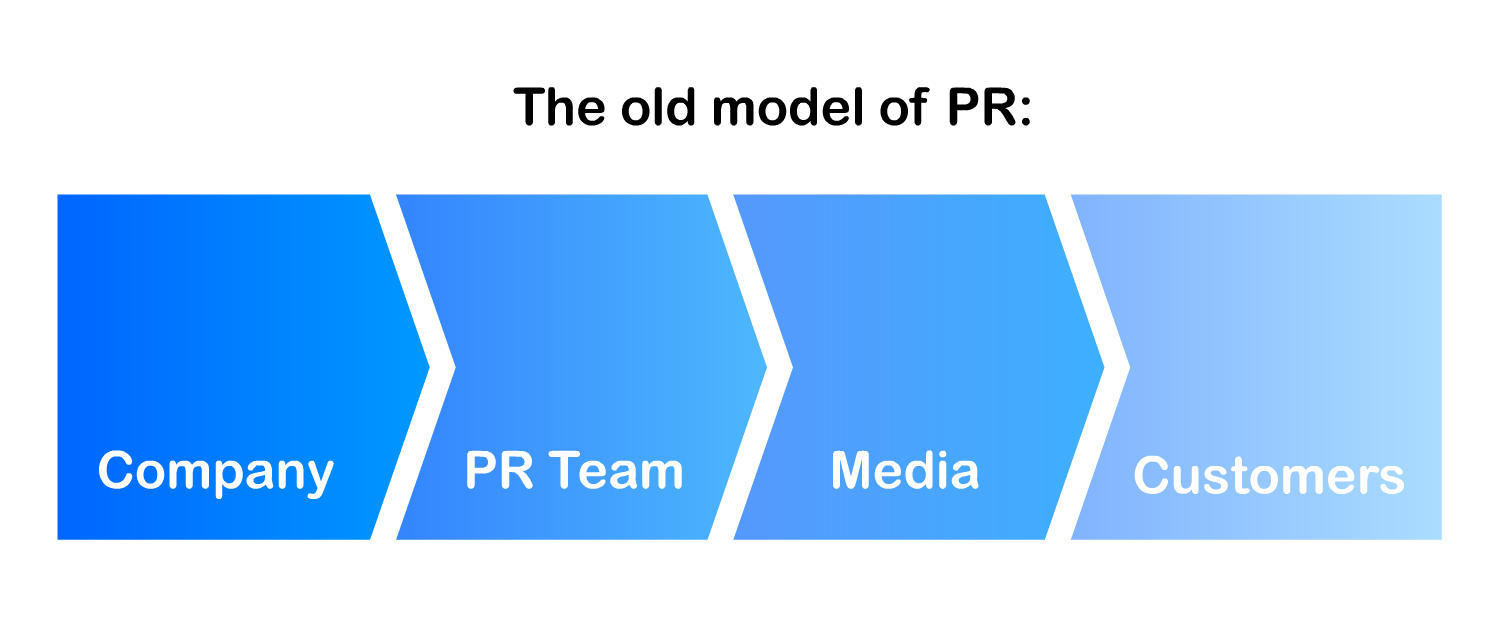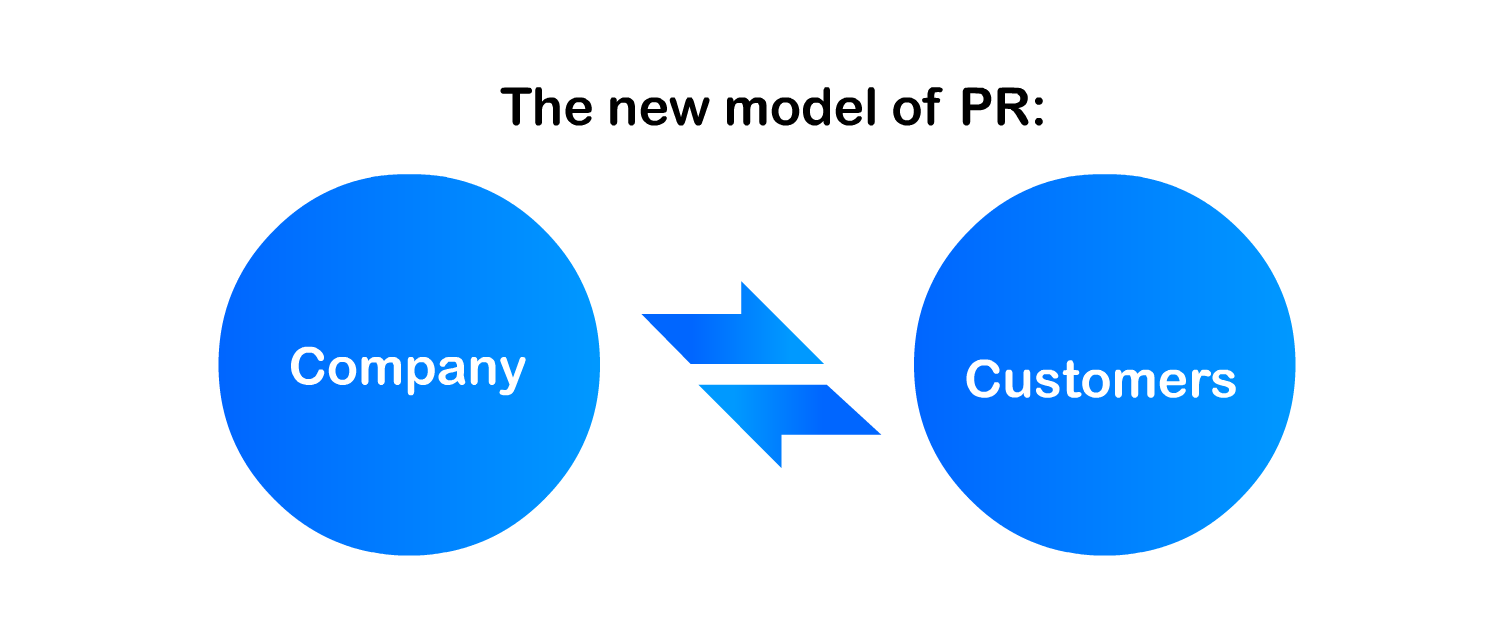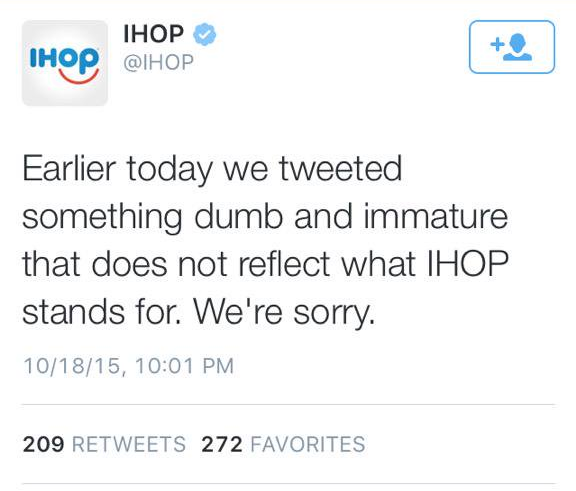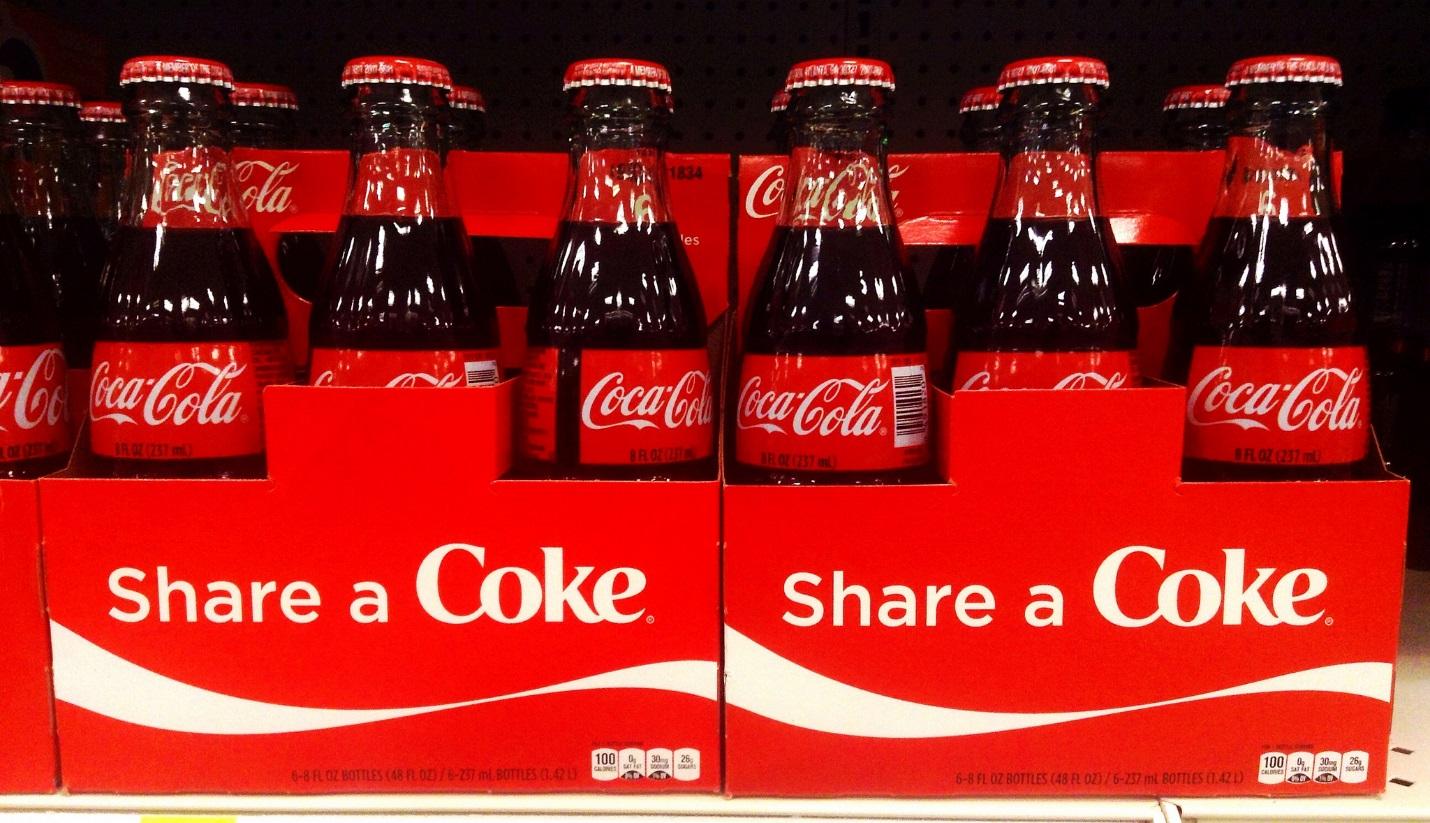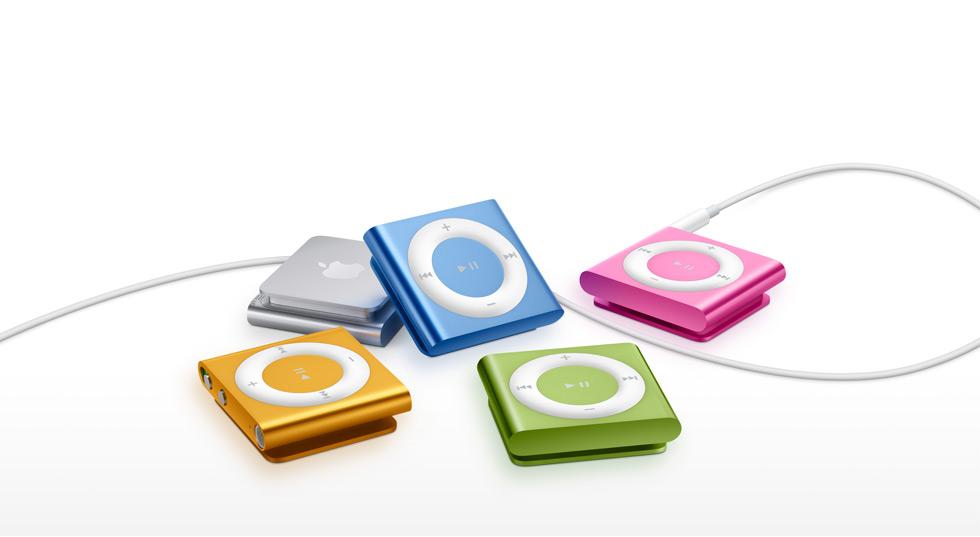PR is dead. Long live PR.
Okay, so maybe the old school public relations techniques and tricks haven’t completely lost their power.
But in the modern digital world, submitting press releases to journalists and hoping for the best is no longer the most effective way to drive attention for your brand.
With the current state of the internet, companies have a variety of more effective ways to get their message across.
These include:
- Using social media to connect directly with customers.
- Inspiring fans to become amateur brand ambassadors.
- Directly addressing customer concerns in a public space to build a stronger reputation.
In short, the internet has removed the middle-man in public relations: companies can now talk directly to the people who matter, inspiring them to develop greater brand loyalty.
Say Goodbye to the Old Ways
In the olden times, before social media, companies that were looking to drum up free publicity needed to befriend an established news platform.
- Company PR staff would write a press release about their upcoming product.
- This would be distributed to journalists and media agencies.
- An outlet would write an article about the product (if they felt it was important enough).
- The public would read the articles written by journalists, and maybe be inspired to take a closer look at the product.
Sometimes, for the sake of time, journalists would use the PR press release word-for-word, but generally there were several layers of commentary and discussion before the public found out about the product.
This model had two major flaws:
- Companies couldn’t talk directly to customers
- Customers couldn’t respond directly to companies.
That said, it’s important to point out that this method of PR isn’t gone: lots of big companies still rely on it because it’s familiar to them.
With the internet age, though, there’s no need to structure public relations efforts so rigidly.
Companies can talk directly to customers, and customers are able to quickly and easily give feedback or opinions.
- Moving these conversations into the public means PR has become a lot simpler.
- That said, there are plenty of new problems that companies are facing as a result of not understanding the best way to reach out to customers.
So, let’s look at some of the pitfalls of new online PR, as well as how you can use quality content to get your brand noticed by the right people.
Easy to Learn, Difficult to Master
This new approach of talking directly to customers is certainly working well for brands who put their all into online PR:
- 80% of internet users prefer to connect with brands through social media.
- 28% of 18-34 year olds say that they’re ‘very likely’ or ‘fairly likely to make a purchase based on solely on reading a reading social media post.
- 27% of young people turn to social media first for their customer service needs.
But there are a couple of downsides to the ease with which companies can reach out to customers:
- There’s a lot more competition for internet user’s attention.
- If a company missteps with their PR, it can end up being seen by a far wider audience (though not necessarily in a positive way).
Together, these problems mean that new age digital PR can be difficult to perfect.
Grabbing Attention
The first problem that companies face in marketing their brands online is simply one of catching people’s attention.
- The reason old PR relied on media companies to work as middlemen was because this was the only way to get audiences’ attentions.
- If a message made it onto an established media channel, there was a good chance that a large audience would see it.
- With the internet, there’s a lot more content available online as everyone seeks to engage with users.
- This means that a message can be easily drowned out among a lot of other voices that are constantly shouting for attention
So what’s the key to success with online, unmediated PR?
The problem that users face online is the ever-flowing tide of distractions.
Some online content is good.
But most isn’t.
With so much content online that’s been quickly thrown together just to grab attention, audiences are becoming more savvy and cynical.
The only content that floats to the top of public consciousness – the stuff that gets shared on social media and produces viral success – is content that’s well produced, interesting, and engaging.
- This is probably why so many larger companies still rely so heavily on old PR channels: it’s a lot easier to throw together a quick press release than it is to create high quality, unique content to market a brand.
- Considering the growing popularity of social media advertising, though, it’s clear that even the world’s most powerful brands are aware of the importance of good new age PR.
For this reason, it’s important not just to advertise online, but also to produce good content that gives people a reason to look at your brand:
- 67% of B2B buyers are increasingly relying on content to help drive their decisions.
- 66% of B2B buyers believe that too much online content is full of filler, and lacks quality.
Making Good Conversation
The second big problem that brands can face online is misjudging their content and getting attention for the wrong reasons.
- It’s important to get internet users looking at your content.
- But on the internet, not all publicity is good publicity.
There are plenty of examples of companies who bite off more than they can chew online, ending up leaving their brand with a less than stellar reputation.
Take, for example, a tweet from IHOP advertising their pancakes.
The tweet said that a pancake is ‘flat but has a GREAT personality’.
While the IHOP social media manager probably thought this was a clever reference to a common saying, many internet readers were less than impressed.
Many tweeters took offense to the expression, arguing that it was misogyny and sexism in action – referencing the expression perpetuated the idea that a woman’s worth in society is connected to her bust size.
Sheepishly, IHOP removed the tweet soon after, and issued a public apology.
No matter how carefully a brand monitors its promotional materials, in the online world it’s often difficult to spot issues that might offend people.
- This is made more difficult because of the volume of content that companies need to produce in order to be seen online.
- Companies often also have to produce content quickly to respond to a particular issue of public interest, and it’s easy to hit the wrong tone in the rush to capitalize on an important event.
There’s no easy solution to this problem: no marketer can possibly foresee all the possible responses to an article.
If there is one thing that can be done to make sure a piece of content sends the right message, though, it’s this:
- Place quality of work over speed of delivery.
Sounds simple, right?
But so many marketers get greedy and rush content out the door without taking a second to look it over.
- This can lead to small errors (such as typos) that can damage your brand’s credibility.
- It can also produce bigger problems such as user backlash, if an article isn’t up to an appropriate standard.
- At the end of the day, internet users are only going to react positively to content that’s well produced, which is why cutting corners in content development can seriously harm your content’s performance.
In order to inspire audiences online and generate a healthy discussion about your products, you need to make sure that the content you produce is top notch.
With online PR, it’s easier to get an article published, but it can often be a lot more challenging to get it noticed among the chaos online.
Encouraging Brand Ambassadors
A big part of modern PR techniques involves developing a cult following around your products.
- We’ve all met someone who’s so dedicated to a brand that they’ll happily tell everyone they meet that their favorite company is better than the competition.
- This is the kind of loyalty you want to inspire in your customers.
- Doing so means gaining a legion of unpaid salespeople who will tackle a lot of your PR needs for you and will spread the good word about your products.
In the modern age, no company has succeeded in creating a loyal fanbase more than the electronics giant Apple.
We all know at least one Apple loyalist who spends every waking moment telling other people how great their latest iPhone or MacBook is.
They’re the kinds of people who will happily fix any problem you have on your iPad, though you probably don’t want to leave them alone in a room with a Samsung user for too long…
So what’s the secret to Apple’s PR success?
How has the company turned so many users into brand evangelists?
- Apple doesn’t just market its products, it also markets the ideology of simple, sleek devices.
- Apple successfully turned the company’s founder, Steve Jobs, into a cultural icon: a visionary businessman and tech expert who could be trusted to produce excellent devices.
- Apple provide personal, approachable tech support in the form of their ‘Genius’ store employees.
These techniques are directly responsible for the success of Apple’s PR efforts over the decades. Use their example as a model for your own PR practices.
Communicating Your Message Simply
It’s important to note that Apple didn’t create their powerful brand overnight.
As early as the 1980s, Apple was trying to convince customers that their brand had a unique style and design that made their devices stand out from the crowd.
Take, for example, the 1984 Superbowl commercial for the first Macintosh computer.
In this ad, Apple:
- Portrays their brand as being the only bright, inviting and exciting option in an otherwise cold, dull world.
- Shows a colorful character destroying the established system, freeing the population from a world without diversity.
- Uses imagery from George Orwell’s dystopian novel 1984 to argue that the Apple brand is the only resistance against a tide of conformity perpetuated by then-market leaders in computing.
While the 1984 commercial is hugely different to more modern, simplistic ads, the same brand identity is visible in this old advertisement. Apple is about vibrancy, color and energy.
It took Apple 20 years from the release of their Superbowl Macintosh ad before they found a way to communicate their brand image that really resonated with viewers.
Their bright, colorful dance ads for the iPod communicated the same message as their 1984 ad, but did so in a far more simple and powerful way.
I don’t know about you, but even just watching an iPod ad makes me want to get up and dance.
The iPod commercials, which feature silhouettes dancing to upbeat music in front of colorful backgrounds, easily communicate the central Apple ideology:
- Their technology is exciting, colorful and vibrant.
- Anyone, regardless of taste, can use it.
- Apple is a brand of creativity and originality.
By communicating this ideology, rather than focusing on the specifics of their products, Apple has built up a fanbase of users who personally identify with the brand, rather than those who are just making use of their products.
In a similar way, brands looking to use the internet for PR purposes ought to focus not on promoting individual products, but on spreading the ideology behind the brand, to help users associate the brand with a particular message or life view.
Providing the Personal Touch
Traditional PR has always been about managing relations between a company and its customers.
- Because of the structure of old school PR, there wasn’t always a lot of opportunities for customers to pass feedback up to the companies they bought from.
- Certainly conversations between customers and companies were less publicized in a world before social media.
A large part of online PR in the modern era means making use of social tools to publicly engage with audiences.
This has many benefits:
- Companies that openly reward their most loyal supporters gain popularity, as online users love to see a brand making an effort to be friendly.
- Brands that engage online are able to address the challenges and issues that customers may have, lessening the blow when an inevitable problem arises (such as when a user has troubleshooting issues or requires additional support).
- Online interactions means customers start seeing brands less as big, unfeeling companies, and more as friends – this means customers have a greater desire to stay loyal and promote a brand’s products to their other friends and family.
For all these reasons, one of the big keys to successful new age PR efforts is making sure that a brand’s social media presence is warm, friendly, and true to the brand’s image.
Avoiding Off-Brand PR Fails
Keeping a company’s media image intact online can often be difficult; this is especially true if a brand’s social media team isn’t entirely in-sync with the company’s core marketing image.
- In the case of large companies, the brand can also be hurt when employees publicly vent their frustration with customers over social media.
- It’s not always easy to control what representatives for your brand are going to say online – even messages published through personal channels can reflect badly on your company.
Take, for example, the case of three Ryanair employees who took to the internet to insult a blogger in 2009.
In booking a flight, Jason Roe discovered a bug in the Irish budget airline Ryanair’s website which set prices to ‘0.00’. He blogged about this, telling readers to pass it on.
Ryanair employees were less than impressed.
Calling Joe an ‘idiot and a liar’, three different employees of the company hurled abuse, refusing to admit that there was anything wrong with the booking system.
Their continued online abuse took many readers by surprise, and the incident was reported on by a variety of popular online media platforms.
One spokesman for Ryanair compounded the PR disaster, telling various news outlets that ‘Lunatic bloggers can have the blog sphere all to themselves’.
Obviously, this is exactly the kind of public relations nightmare that most companies are eager to avoid.
In the case of Ryanair, this kind of behavior from staff fit neatly into existing perceptions about their customer service practices, leading to the strengthening of their public image as a company that willfully ignores their customers.
- My favorite comment on the matter came from one responder who asked Ryanair, ‘I’m curious; is defensive aggression something Ryanair provide training in, or is it something they explicitly look for when hiring someone?’
As a rule, just in case this wasn’t clear already, letting anyone associated with your brand scream abuse at your customers online is a bad idea.
Beware Restrictions
In the face of these kinds of potential PR snafus, many companies keep a close watch on their employee activities online, insisting that the content they publish cannot be demeaning or insulting, lest anything they post negatively affect the company’s brand.
- It’s important, though, not to take things too far and begin forcing employees to censor materials that don’t affect their work.
One school in Utah recently received complaints from parents that one of their teachers, Mindi Jensen, was posting photos of herself at the gym in revealing clothing on her Instagram.
The school attempted to coerce the teacher into taking the photos down, or to make her Instagram profile private.
- She was warned that, should she choose to leave the photos online, she might be fired.
After posting about her treatment online, Mindi’s story went viral and the school was forced to issue an apology.
At present, Mindi still teaches at the school, and has been allowed to keep updating her Instagram account – an excellent example of a company (a school, in this case) taking its online PR so seriously that it ultimately damages itself.
Attempting to be too controlling can produce such negative effects that online audiences may turn against your company entirely.
- To truly get the most out of online PR efforts, brands need to give all users – both employees and customers – the space to express themselves and their concerns with the brand.
This helps to open an honest dialogue about your products, which makes customers more likely to respond positively to your online PR efforts.
PR in the modern age is a delicate art – a lot of things can go wrong, and it can take a lot of hard work and patience to build up an impressive digital presence.
- With do many voices shouting for attention online, it can feel like an uphill struggle to even get your brand noticed.
- It’s easy to make small missteps that can damage your brand’s reputation, and give people the wrong impression about your core ideology.
- Even after all your efforts, some people will still look for flaws or weaknesses in your online presence.
If I could pick only one point to emphasize on how to succeed at new age PR, it’s that quality ought to be your constant goal.
Through high quality content, you draw internet users to your brand.
Through a carefully structured social media presence, you give your brand a smart, professional image that people will want to deal with.
Have a think about how you can add additional quality to your online presence, to help make your PR efforts stand out. Then, share a comment below describing how you plan to move forward:
Images:
Flickr, Flickr, Pixabay, Flickr, Flickr, Flickr, Pixabay, Twitter, Twitter, Flickr, Pixabay, Pixabay, Flickr, Pixabay, Flickr, eConsultancy, Instagram, Instagram, Pixabay.






